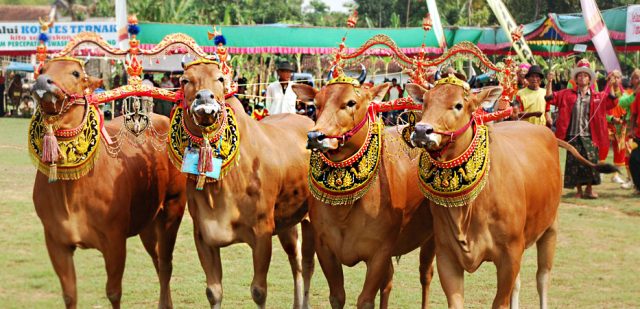Type the name of the breed you're looking for below
[wpdreams_ajaxsearchlite] Don't see the breed your're looking for? Click here and let us know!
Madura cattle
| Place of Origin | Indonesia |
| Origin | They originated on the island of Madura near northeastern Java, where the original cattle population was Banteng, very similar to Bali cattle. Sinhala cattle, a Zebu breed from Sri Lanka, were introduced more than 1500 years ago, and the cross was found to be better than either of the original breeds. Some sources say the Zebu component was Ongole Cattle from India. |
| Purpose | In bull racing two bulls are yoked together, pulling a small sled on which the driver attempts to balance over a hundred metre course. Meat, dairy and draught (work). |
| Appearance | The colouration is reddish brown with non-specific white patterning on the back and rump. |
| Horns | Small upward curved horns. |
| Cows Average Weight | 250 kg (551 lbs.) |
| Bulls Average Weight | 300 kg (661 lbs.) |
| Other Considerations | Sometimes called dancing cattle. In 2002 the population was estimated by the FAO at 900,000. Efforts are being made to conserve the breed on Sapudi-island. |



